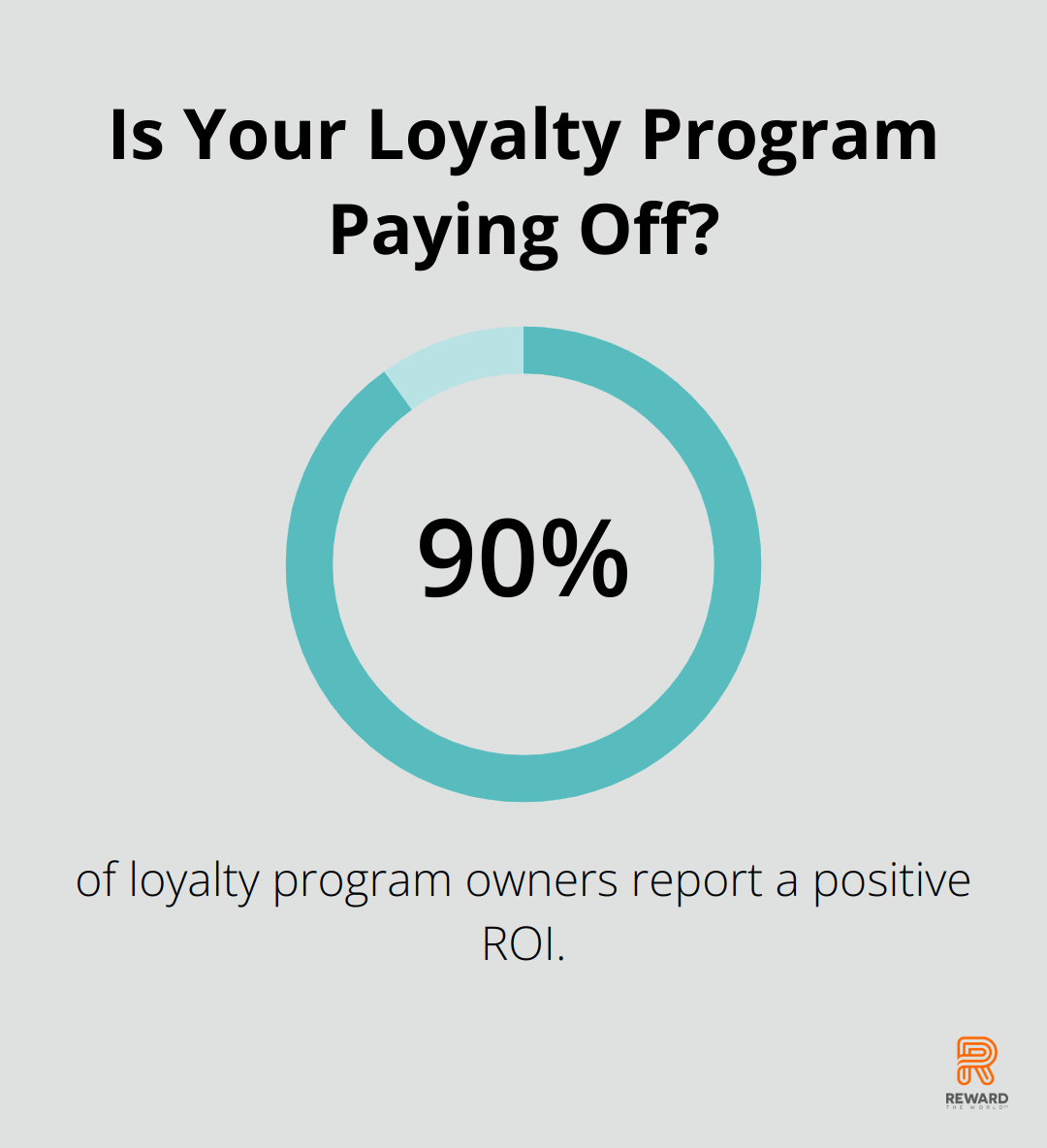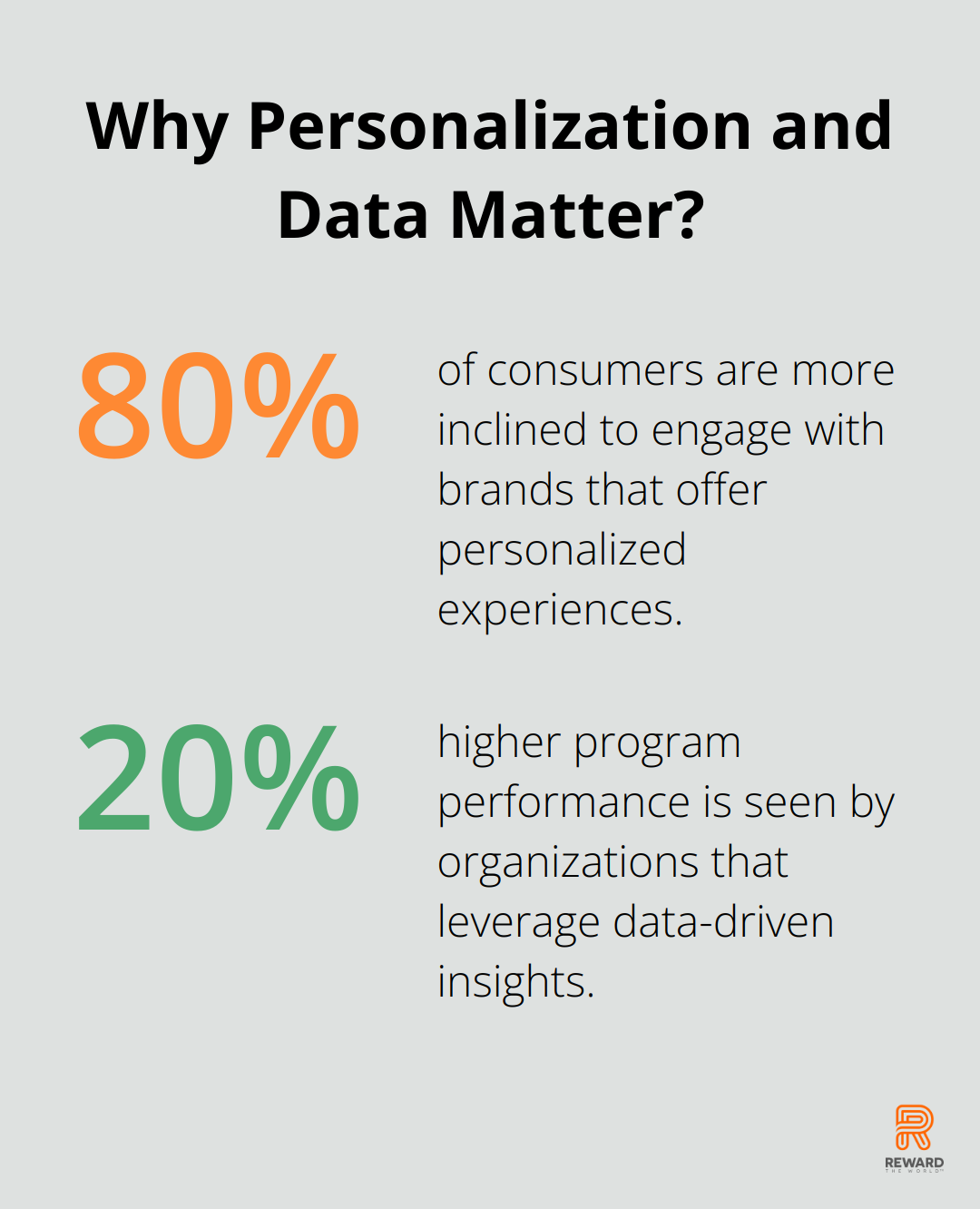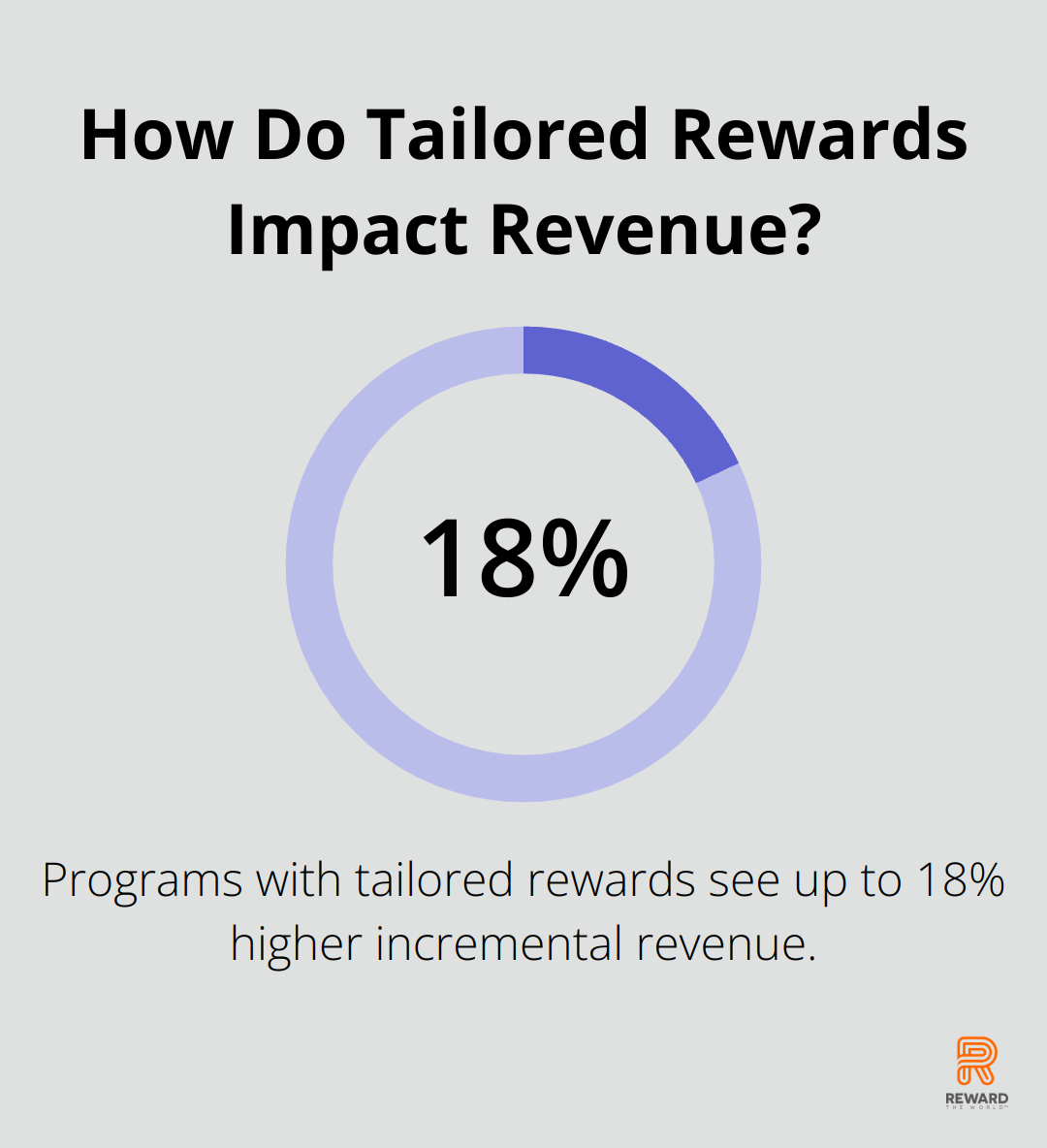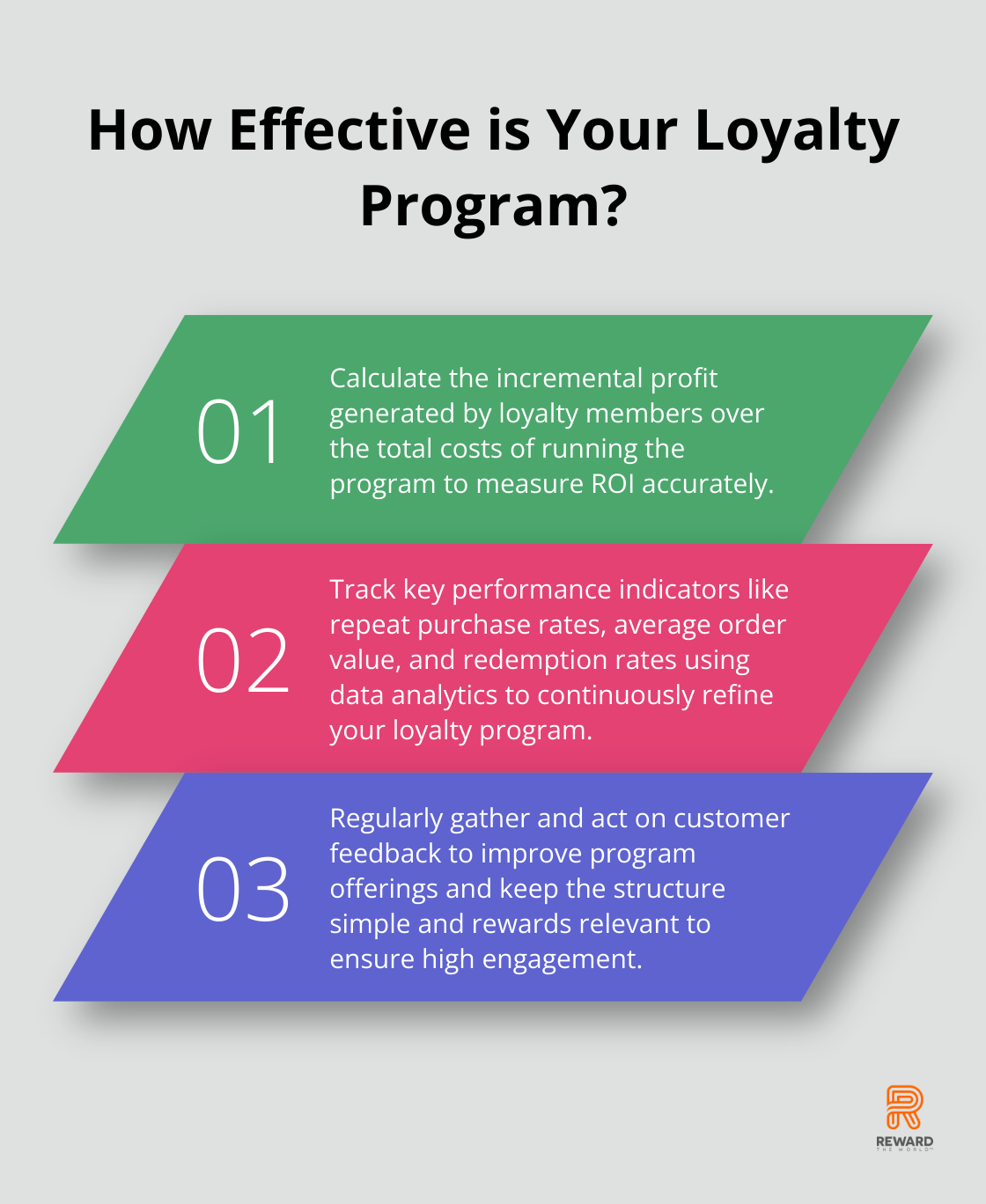
Loyalty programs are powerful tools for enhancing customer retention and driving revenue growth.
Understanding the return on investment (ROI) of these programs is essential for optimizing their effectiveness and justifying their costs.
In this guide, we at Reward the World will explore key metrics, strategies, and common pitfalls to help you maximize the ROI of your loyalty initiatives.
What is Loyalty Program ROI?
Understanding the return on investment (ROI) for loyalty programs is not just about gauging profitability—it’s about refining strategies and maximizing the impact on customer retention and revenue growth. Calculating ROI helps companies steer their initiatives towards better outcomes, making it a critical component of any loyalty program.
Definition and Importance of ROI in Loyalty Programs
ROI measures the financial return compared to the cost of the investment. In loyalty programs, this means understanding the incremental profit generated by loyalty members over the total costs of running the program. This calculation isn’t a mere operational requirement—it’s a strategic necessity. Companies that effectively measure and optimize their loyalty program ROI see enhanced customer relationships, higher revenue, and a better allocation of resources.

According to the Global Customer Loyalty Report 2024, 90% of loyalty program owners report a positive ROI, usually evident within two years. Investing in a loyalty program is not a short-term tactic but a long-term strategy that can significantly boost your brand’s profitability.
Key Metrics to Measure ROI
Several metrics are crucial for assessing loyalty program ROI. Focus on the following:
Incremental Revenue: Track the difference in revenue from customers before and after joining the loyalty program. Members of loyalty programs generally generate 12-18% more incremental revenue growth per year than non-members. This metric shows how much additional revenue is directly attributable to the loyalty program.
Customer Lifetime Value (CLV): Calculate the total revenue a customer is expected to generate over their lifetime. Loyalty program members often have a higher CLV due to increased purchase frequency and higher average order values.
Redemption Rates: Measure the percentage of earned rewards that members redeem. High redemption rates typically indicate engaged members, which is a good sign for your program’s health. Engagement rates and redemption rates are direct indicators of how well your program motivates members to interact with your brand.
Program Costs: Include technology expenses, personnel costs, marketing efforts, and the cost of rewards. For an accurate ROI calculation, subtract these costs from the incremental revenue generated by the program. On average, businesses spend about 28.2% of their marketing budget on customer loyalty, reflecting a significant investment that should be meticulously monitored.
Case Studies: Successful Loyalty Programs with High ROI
Exploring real-world examples can provide actionable insights into how effective loyalty programs operate.
- Amazon Prime: Amazon Prime members spend more than double that of non-member customers. The program’s success lies in offering substantial value through free shipping, exclusive deals, and streaming services, which enhances customer loyalty and drives significant incremental revenue.
- Princess Polly: This brand has achieved a 4x ROI through its loyalty initiatives by focusing on personalized rewards and leveraging customer data to tailor offers. Their continuous program refinements and engagement strategies have resulted in high participation and redemption rates.
- Walmart+: Walmart leverages its loyalty program to encourage more frequent shopping. With members spending approximately $79 per online visit, Walmart+ demonstrates the financial impact of providing value and benefits closely aligned with customer needs.
In conclusion, assessing and optimizing loyalty program ROI requires a deep understanding of these key metrics and learning from successful case studies. By focusing on concrete data and continuous refinement, businesses can significantly enhance their loyalty programs’ effectiveness and financial returns.
How to Boost ROI?
Maximizing the ROI of your loyalty program requires intentional strategies and diligent monitoring. Implement these approaches to see tangible improvements.
Leverage Personalization and Customer Segmentation
Tailoring experiences based on customer data drives engagement and loyalty. Use transaction history and preferences to segment your audience. This empowers you to deliver personalized offers that resonate. For instance, 80% of consumers are more inclined to engage with brands that offer personalized experiences. Segmented campaigns have been shown to perform significantly better, often resulting in a 10-15% increase in conversion rates. This not only heightens customer satisfaction but also boosts overall program effectiveness.
Enhance Multi-Channel Engagement and Communication
Engaging customers across multiple channels ensures consistent interaction with your brand. Use email, social media, and mobile apps to reach members where they are most active. A study highlighted that consumers engaging with a brand on more than three channels generate three times more spending compared to one-channel customers. Multi-channel strategies also enable you to deliver timely and relevant content, keeping your brand top-of-mind and fostering stronger loyalty.
Utilize Data Analytics to Track and Improve Performance
Data analytics is pivotal in understanding your program’s impact and identifying areas for improvement. Track key performance indicators like repeat purchase rates, average order value, and redemption rates. Organizations that leverage data-driven insights see up to 20% higher program performance. Use this data to refine your rewards, adjust marketing tactics, and segment your audience effectively. Regular analysis helps in making informed decisions, ensuring that your loyalty program adapts to changing customer behavior and continues to deliver strong returns.

Employing these strategies will significantly enhance the ROI of your loyalty program, fostering deeper customer relationships and driving continued revenue growth.
Common Pitfalls and How to Avoid Them
Overcomplicating the Program Structure
One major mistake in loyalty programs is overcomplicating the structure. Programs with too many layers, rules, and restrictions can confuse and frustrate customers, leading to low engagement and participation. Keep your program simple and straightforward. Simplifying your program encourages more users to join and engage consistently. Focus on clear, achievable rewards and easy-to-understand rules.
Neglecting Customer Feedback
Ignoring customer feedback can lead to missed opportunities for program improvements and increased dissatisfaction. Regularly solicit feedback through surveys, polls, and direct interactions. Acting on feedback shows customers that their opinions matter, strengthening their connection to your brand. Regularly review and adjust your program based on the insights gathered to stay relevant and effective.
Ignoring the Importance of Rewards and Incentives
The incentives and rewards offered are the heart of any loyalty program. Offering rewards that don’t resonate with your customers can significantly diminish the program’s impact. According to Antavo, personalized rewards and early access benefits are critical in driving engagement and revenue. Ensure your rewards align with customer preferences by leveraging transactional data and preferences. Programs with tailored rewards see up to 18% higher incremental revenue. Continuously evaluate and update your reward offerings to match evolving customer interests and market trends.

To effectively navigate the intricacies of customer retention, you may also find it helpful to explore our guide on how to choose customer retention analysis tools.
Conclusion
In this guide, we’ve stressed the importance of understanding and optimizing the ROI of your loyalty program. By focusing on key metrics such as incremental revenue, customer lifetime value, and redemption rates, companies can fine-tune their efforts and maximize the financial impact of their loyalty initiatives.

Loyalty programs that effectively measure and enhance their ROI benefit from stronger customer relationships and higher revenue growth. With 90% of loyalty program owners experiencing positive ROI within two years, the long-term investment in these programs becomes evidently rewarding. Implementing personalized rewards, leveraging data analytics, and maintaining a multi-channel engagement approach can significantly boost your program’s effectiveness.
Regular evaluation and optimization are crucial. Businesses should continually refine their loyalty programs, ensuring they remain relevant and efficient. Avoiding common pitfalls like overcomplicating the program, neglecting customer feedback, and aligning rewards with customer preferences can lead to more successful outcomes.
At Reward the World, our platform offers a comprehensive solution to elevate customer engagement and boost your company’s performance. With instant reward delivery and robust analytics, we help businesses foster loyalty and increase sales effectively. By focusing on loyalty program ROI, you can enhance your customer relationships and drive lasting growth.
